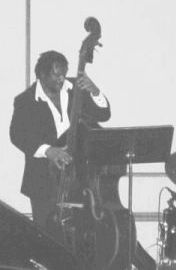THE ART AND SCIENCE OF IMPROVISATION
There’s no mystique to improvising. Schools and teachers build whole classes and make a lot of money turning improvisation into something akin to voodoo. In reality, anyone with musicality can learn to improvise.
Improvisation Tips
Find one note in the song and keep applying it. You’ll probably find four notes in the whole song that will work. Now look at the scale and find the common tone. You’ll find one note that will work with every chord change. You might find two.
Next, build a parody of the melody off that note. In improvisation, we make up a new melody every time we play through the chord changes. In the first chorus, you play every chorus of your solo, and you play very close to the melody. In the second chorus, you take off on the first chorus and go a little further. By the third chorus, it’s established. The audience has absorbed the melody; they have heard the improvisation of the melody, and now you can take it further out.
African musicians do it this way—the original first, then in the middle of the song they play a parody—to have fun—a take off that’s way out, and then they come back to play rest of tune. Of course, you don’t need to bring it back in. Let the next soloist suffer. Dr. Billy Taylor explained it to me this way.
An Exercise
Play the melody of a song you know.
Goof around with it a little bit. Omit measures and let the time go by. Understand about phrasing and space. It’s usually what you don’t say that matters when you’re improvising.
Keep practicing that until you’re secure about hearing the chord changes without the melody. And that is the key—to hear those chord changes and memorize those without actually playing the song, and adding to it.
More to come when I’m back in the states.
Live (almost) from Hong Kong, - George





0 Comments:
Post a Comment
<< Home